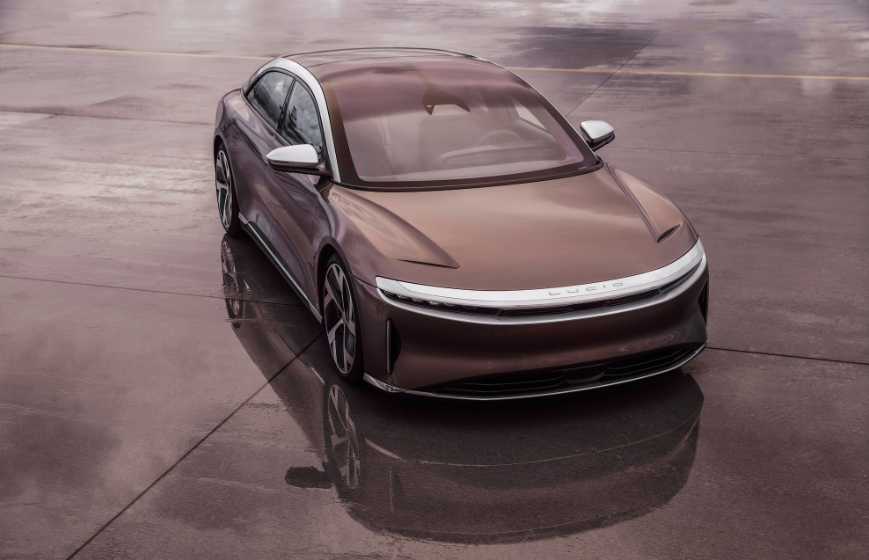Lucid Group$Lucid Group Inc(LCID)$ (LCID-2.25%), the electric vehicle maker that went public by merging with a special purpose acquisition company (SPAC) last July, has often been compared toTesla$Tesla Motors(TSLA)$ (TSLA-0.37%).
Lucid's CEO and CTO Peter Rawlinson previously served as Tesla's chief vehicle engineer from 2009 to 2012. Its debut vehicle, the Lucid Dream, can travel up to 520 miles on a single charge, which beats Tesla's Model S Long Range by more than 100 miles. Lucid also targets a higher-end market than Tesla, with even pricier EVs.
However, Lucid only started shipping its first vehicles last October, and it will likely take more than a decade for the fledgling company to match Tesla's current production capabilities. Lucid's market cap of $35 billion is also tiny compared to Tesla's market cap of $1.01 trillion. But could it repeat Tesla's success story and join the 12-zero club by 2030?
 Overcoming its near-term challenges
Overcoming its near-term challenges
Between last October and the end of this February, Lucid delivered 300 Air sedans. It had planned to deliver 20,000 vehicles in 2022, but it reduced that target to 12,000-14,000 during its fourth-quarter report in February.
It blamed that reductionon the ongoing chip shortage and supply-chain challenges across the world. It also postponed the upcoming launch of its second EV, the Gravity SUV, from 2023 to the first half of 2024.
Despite those challenges, Lucid's reservations still reached 25,000 at the end of February, which represents a steady increase from 13,000 reservations last September and 17,000 reservations last November.
Lucid's AMP-1 manufacturing plant in Arizona has an annual production capacity of 34,000 vehicles. It expects its Phase 2 expansion, which broke ground last July, to boost its annual capacity to 90,000 vehicles in 2023.
At the same time, Lucid plans to expand overseas. It already expanded into Canada last year, and it's gearing up to enter the Europe, Middle East, and Africa (EMEA) market this year with its first factory in Saudi Arabia. It also plans to enter the booming but fragmented Chinese EV market in 2023.
Lucid expects its expenses to soar in 2022 and 2023 as it executes those plans. Based on its reduced shipment targets, analysts expect the company to generate just $1.3 billion in revenue this year, compared to its original target of $2.2 billion, while incurring a net loss of $2.2 billion.
In 2023, analysts expect Lucid's revenue to rise 172% to $3.5 billion as its net loss narrows to $1.6 billion. In 2024, they expect its revenue to grow another 70% to $6.0 billion as its net loss narrows to $1.1 billion.
Lucid expects to turn profitable on an adjusted earnings before interest, taxes, depreciation, and amortization (EBITDA) basis for the first time in 2024, and for its free cash flow (FCF) to turn positive the following year.
Swinging for a home run by 2030
Lucid expects to generate $14 billion in revenue in 2025 as it ships 135,000 vehicles and to generate $22.8 billion in revenue in 2026 from 251,000 vehicles. Here's a clearer breakdown of that ambitious roadmap:
Model |
2025 Shipments |
2026 Shipments |
|---|---|---|
Air |
42,000 |
42,000 |
Gravity |
86,000 |
134,000 |
New Model |
7,000-8,000 |
75,000 |
Total Shipments |
135,000 |
251,000 |
Target Revenue |
$14.0 billion |
$22.8 billion |
But between 2026 and 2030, Lucid expects to double its annual shipments to 500,000. By comparison, Tesla's annual deliveries rose from 245,240 in 2018 to 499,550 in 2020, and it delivered 936,172 vehicles in 2021.
Lucid's planned four-year gap between a quarter-million and half-million deliveries seems more conservative than Tesla's two-year gap. But it's still a very lofty goal considering that Lucid lacks Tesla's first-mover advantage and targets a much smaller niche of top-tier luxury buyers.
Could Lucid possibly become a trillion-dollar company?
Assuming that Lucid's average selling prices stay roughly the same (at about $91,000 per vehicle) between 2026 and 2030, it will likely generate about $45 billion in revenue by the final year.
With a market cap of $35 billion, Lucid currently trades at 27 times this year's sales. If we multiply thatprice-to-sales ratioby $45 billion, we get a market capitalization of $1.2 trillion.
However, it's highly unlikely that Lucid will continue to trade at such a high valuation as its year-over-year revenue growth decelerates. That's why Tesla currently trades at 12 times this year's sales.
If Lucid hits its growth targets and also trades at 12 times sales in 2030, it would be worth about $540 billion -- which would broadly miss the trillion-dollar mark, but still make it one of the world's most valuable automakers.
I believe that's the best-case scenario for Lucid's investors, and it would still represent a 15-bagger gain from its current price. But for now, investors should focus on Lucid's ability to achieve its near-term goals for 2022 and 2023 as it navigates its supply chain challenges. If it needs to cut its production targets again or revise its long-term roadmap, it could struggle to maintain its current valuation and its stock could crash.
Comments